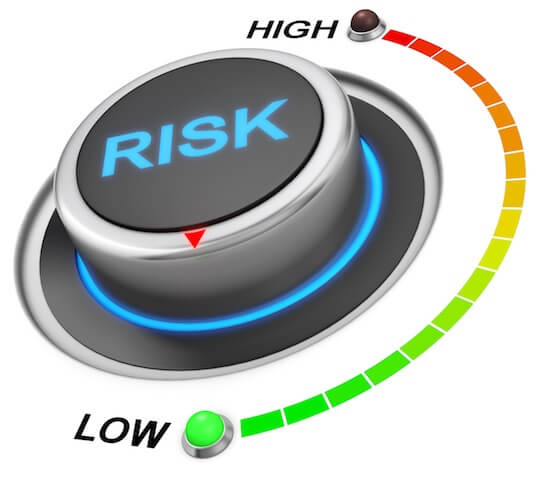
8 Benefits of Risk Management (Beyond Project Control)
8 BENEFITS OF RISK MANAGEMENT (BEYOND PROJECT CONTROL)
You are here: Home / News / 8 Benefits of Risk Management (Beyond Project Control)
February 28, 2017 By Ten Six
Risk management is a core leadership approach that ensures any potential threats to success are identified and dealt with before they derail your project.
For a project manager, risk management is a key process for project control. Armed with a risk log and a switched on team, the project manager can plan for any eventuality.
But risk management is far more than that. It has far-reaching benefits that can fundamentally change how a management team makes decisions. Here are 8 of the lesser known, but equally important, benefits of a robust enterprise approach to risk management.
1. It’s easier to spot projects in trouble
Risk management practices let you see where projects need attention, and which projects these are. Dovetailing perfectly with any existing Project Management Office processes you already have in place, good risk management can give you the context for understanding the performance of a project and contribute to any health checks, peer reviews or audits.
2. There are fewer surprises
Leaders typically don’t like surprises! A robust approach to managing risk allows teams to better communicate about project challenges in a more timely way. Risk management practices let the team spot concerns far earlier.
Early awareness of potential problems means that the right people can intervene to mitigate a problem before it becomes too severe to do anything about. It also avoids the ‘project manager as hero’ scenario, and lots of firefighting, which is generally an expensive and high-effort way to fix problems. Managing risks before they materialize makes for fewer sensational headlines but a smoother, more efficient and cost-effective way of running your business.
3. There’s better quality data for decision making
Senior leaders have access to better quality and more helpful data which enables them to make better decisions more grounded in the reality of a project.
Being able to access risk information in real time through a project management dashboard means that decisions are made based on the latest data, not a report that is already out of date before it reaches the Exec team.
4. Communication is elevated
Good risk management elevates the conversation. It creates a point of discussion between project teams and key senior stakeholders, prompting them to discuss the difficult topics and deal with potential causes of conflict. Suppliers are involved in the conversations too, as risk responses necessarily touch on their activities. Including them in risk management discussions can create more positive working relationships with their key personnel, because they’ll see that their success is tied to the success of the project and that there is willingness to work as a whole team to do something about it.
The conversation can be framed in what is good for the project and the enterprise, instead of either being too caught up in the detail or affected by internal politics. An increase in dialogue, and the content of that dialogue, brings the team closer together as a working group.
5. Budgets rely less on guesswork
“What should the contingency budget for this project be? Let’s guess at 10%.”
Project risk management means that contingency budgets can be more accurately estimated and rely less on the professional guesstimates of the project team. By incorporating risk management into schedule planning and cost planning you can create scenarios to better inform what you should be budgeting in terms of extra time, resource and money.
Overall this will lead to fewer cost and time overruns and better quality plans.
6. The expectation of success is set
Knowing that risk is being actively managed sets an expectation for project success. With the framework in place to deliver despite the known risks, and open communication about the project’s challenges with senior managers, everyone begins work knowing that success is the expected outcome.
This changes the whole mindset of the team: knowing they are working on something destined to deliver great results for the company improves morale, supports productivity and hopefully engenders and environment where success is achieved!
7. The team remains focused
With risks being actively tracked and managed, the project team can maintain a focus on the critical outcomes. Risk management supports this because it serves to highlight where project outcomes may not be achieved, focusing the team on what to do about that particular concern to get the project back on track.
With risk management shining a light on the areas of challenge within a project, the team can move swiftly to deal with them, ensuring that actions are taken to mitigate the risk and deliver successfully. This prevents problems from being overlooked in the busyness of the day-to-day work on a project – especially when those problems appear to be difficult to solve.
8. Escalations are clearer and easier
When a project team can’t deal with a risk themselves, they need to escalate it to senior management for advice and action. Clear risk management processes take the guesswork out of when this should happen. A defined process ensures that important risks are seen and assessed by the right people at the right time, enabling early action as required to better address a potential problem.
The management team aren’t receiving alerts about every risk, which makes it easier for them to focus on what is important and what requires their attention.
There are many more benefits of good risk management than just these 8 reasons, but take these on board and you are well on the way to understanding the depth of benefit that risk management can offer your organization.








